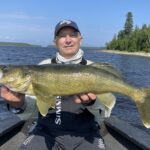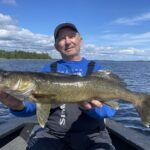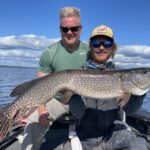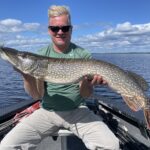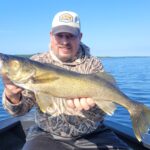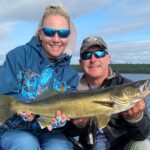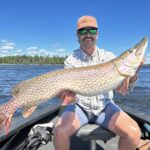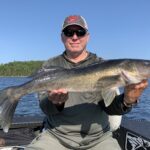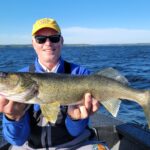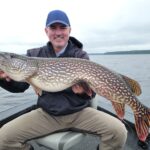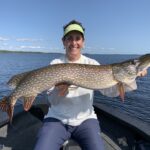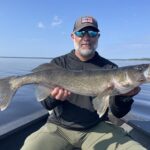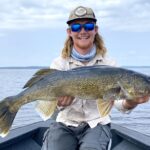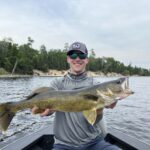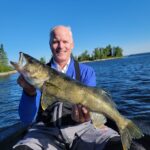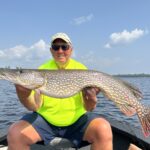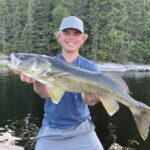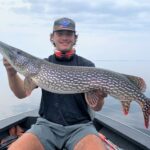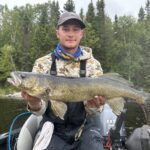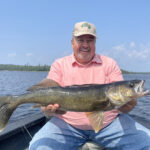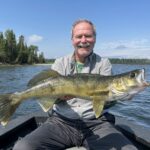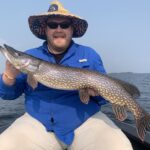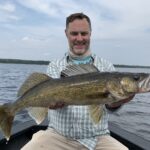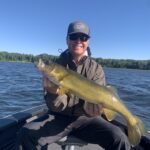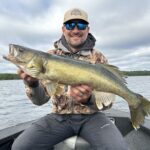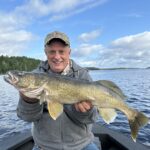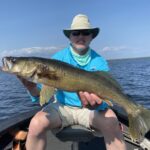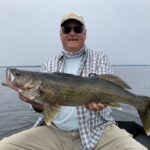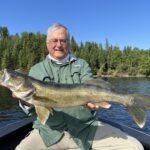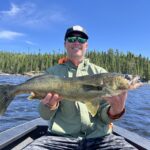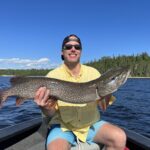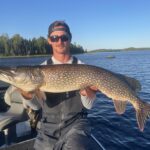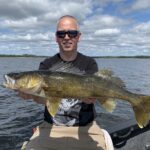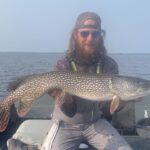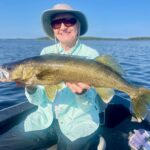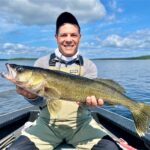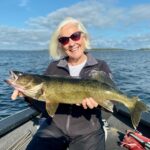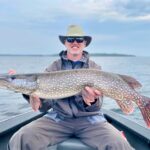Silver Water Wheel Lodge
Lac Seul, Ontario
July 29, 2023
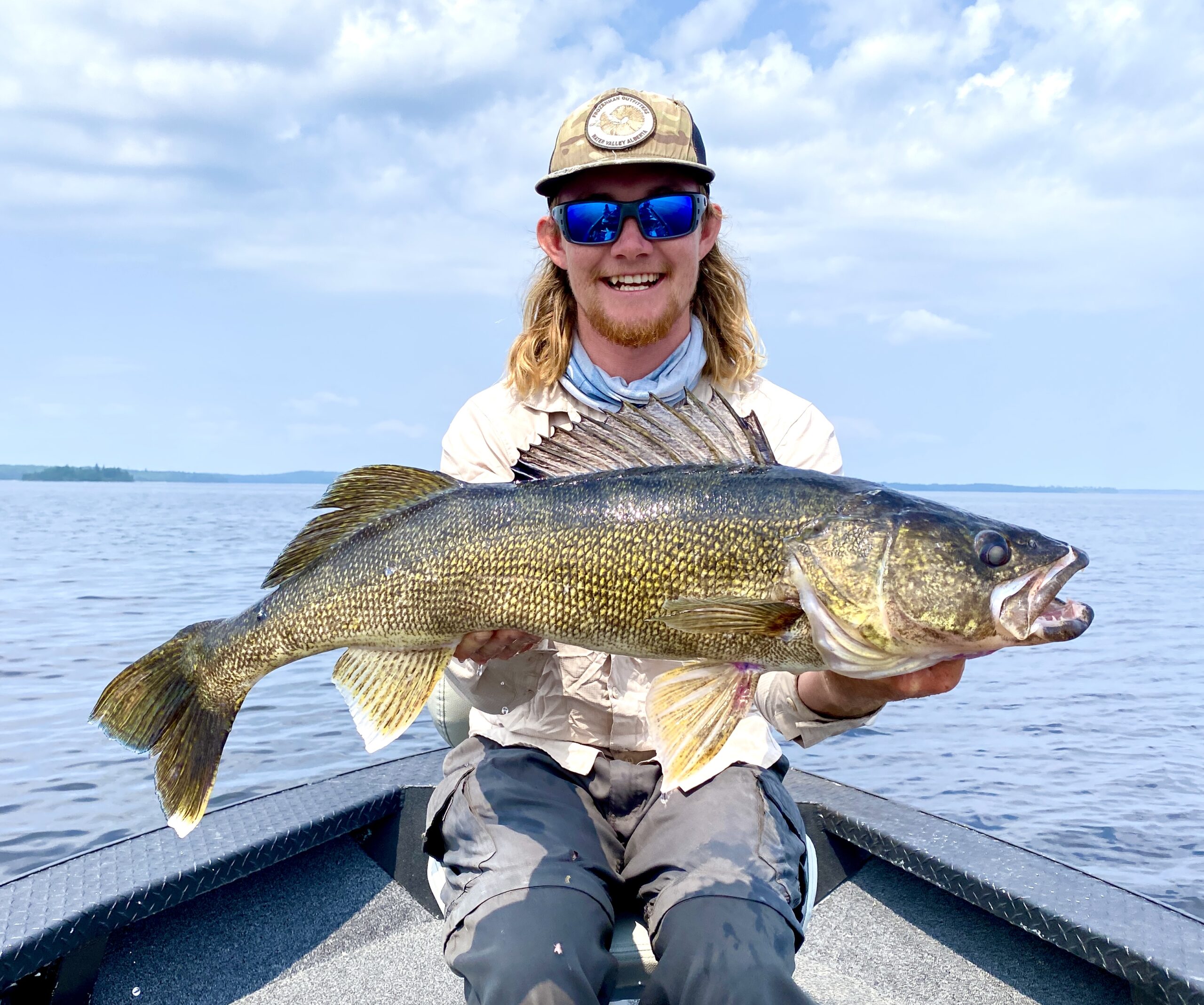
Orrin Digby 31.5
Most weeks the walleye moves are gradual or if they are sudden, then there is an obvious major weather change that can be directly identified as the cause. This week was the biggest blind side of the year!
Even with the advantage of hindsight, it is still, just about impossible for us to identify any weather change that could have caused such a complete and total shift in walleye location. They flat out left the deep water. I am not talking about a slower bite or catching fewer fish on deep water sand or rock. I mean they left. Gone!
We have played this game a long time and part of our guide training curriculum is to watch for the environmental cues that predict when the walleyes move to shallow water in the summer. Usually, after three or more consecutive days of blazing hot sunshine with no wind, we expect the smaller to medium sized walleyes to leave the deep breaks of the main lake and head shallow. Normally, this is the beginning of a weed bite. We teach that we expect to see a separation in the walleye populations. The really big walleyes stay deep and the smaller to mid-sized fish move shallower. We do hit them on shallow main lake rock, but the big volume shallow water bites are usually focused on the deep side of the weeds. Historically, during prolonged sunny hot spells that extend into 5 or more days, the big ones can move shallow as well.
That is not what happened this week. All of the walleyes got the memo. We did not!
Complicating our guiding puzzle, the walleyes that did move shallow did not move shallow into the usual “summer weed bite weed beds.” Only about 10% of the main lake cabbage weed edges were holding walleyes. The ones that did were loaded. The rest were empty or had a few micros.
Personally, this was my most difficult guiding week of the year. Even though I was armed with the knowledge of how we have solved these puzzles in the past, there were several days that I flat out failed. Fortunately, I am surrounded by a bunch of clever guides that hate to lose as much as I do and eventually, we came up with a solution.
Last week the answer was scan, screen, and dead stick light jigs down deep on main lake rock or sand. This week, the answer was move as fast as you can with jigs and Gulp of varying sizes to identify areas holding active walleyes. Find enough active spots, and sort long enough, and you found big walleyes as well. More than 90% of our walleyes this week were caught between 8 – 15 ft. of water. Guides that know our history and were hunting big fish, ignored initial reports and stuck to deep water. This week, we caught most of our 27s and 28s in less than 12 ft.
The stats took a hit this week. We caught and released 37 walleyes over 27 in., including 3 – 28s and 1 – 31. Volume is hard to talk about. Guide sheets were up and down, but we averaged less than 30 walleyes over 18 in. per boat per day.
Several guide boats convinced their guests to shift gears to chase pike and their results were good. For the few boats casting, we caught and released 13 pike over 37 in., including 4 – 38s, 2 – 39s, 2 – 40s, and 1 – 41. The Williams Whitefish was hard to beat and was the number one producer this week.
The Take away: There was some debate amongst the guide staff about whether we should showcase a guide with the front-page fish photo. I vetoed the argument. Many of our guide training teaching points are focused on the principle – “That it is not about the guide…. – it is about the guest.” And that remains true, but I don’t care who catches a world class walleye. That photo is front and center. If you have read this far into my fishing report, then I am guessing that you are just like me, and you don’t come to Canada expecting to catch a 30 in. walleye. We both just want to fish where they live.
On this challenging week, one of my core senior guides caught the fish of a lifetime and I want everyone to celebrate it! Orrin Digby – 31.5 Walleye ….. and she is still out there!
